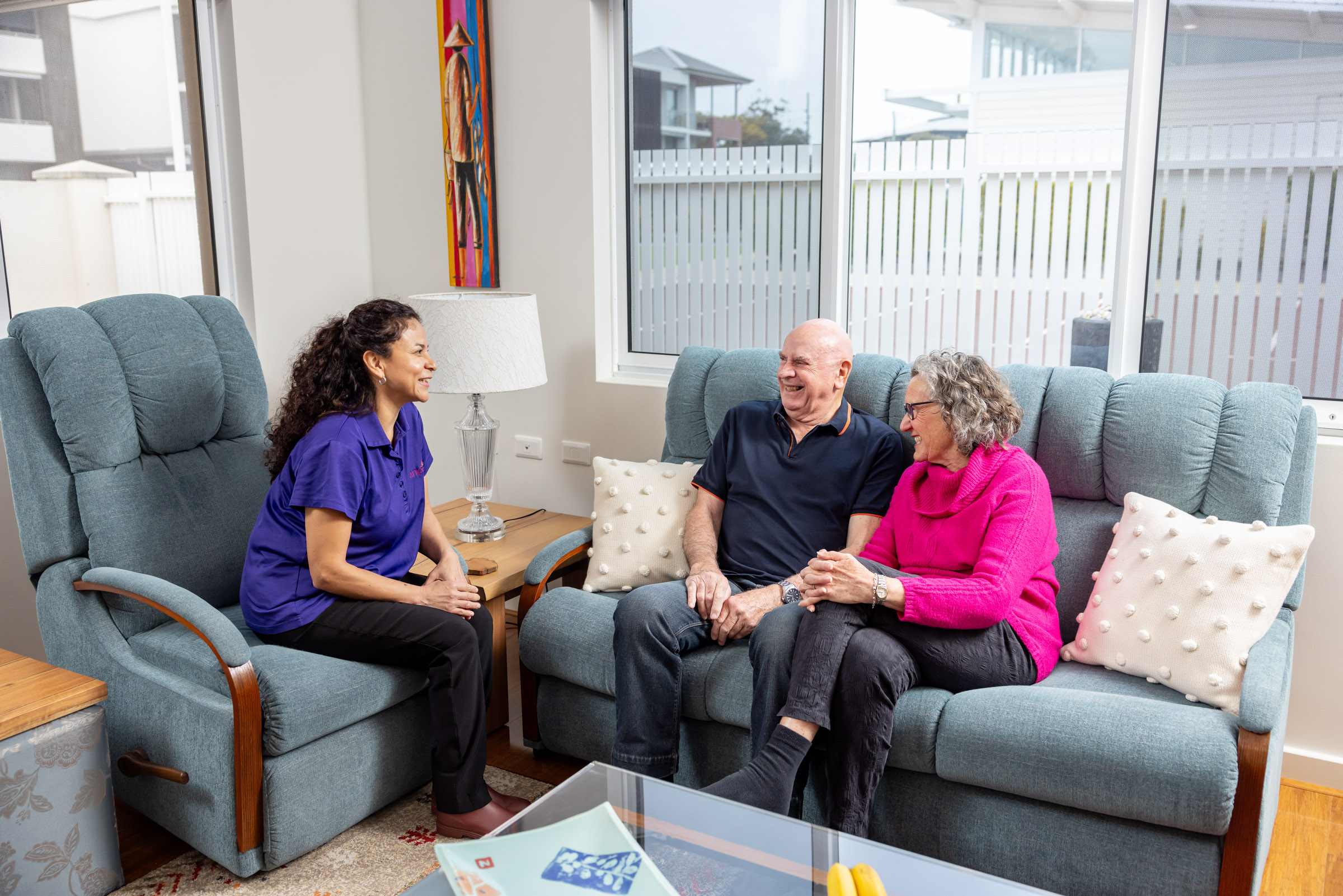They may have “occupation” in their title, but Juniper’s Occupational Therapy team says for their Home Care customers “occupation” doesn’t just mean helping at work but extends to supporting people to continue or get back to doing things they love.
“The most important thing we want our customers, and the general public, to know is that as Occupational Therapists, ‘occupation’ does not just mean work, or what a person does for a living,” said Juniper Occupational Therapy Clinical Team Leader Kesha Logan.
“It includes your self-care, your engagement with your community, driving, shopping…basically anything people enjoy doing.”
In the home care space, an OT can maintain and improve an older person’s independence so they can continue living in their community safely in many different ways, such as the prescription of Assistive Technology, seating, pressure care and home modifications.
Stepping into a newly created role as of Clinical Team Leader of Occupational Therapy, Kesha not only wants to upskill, mentor and grow her team of Occupational Therapists, she also wants to highlight the purpose and benefits of OT to Juniper customers.
Overseeing a team of 16 Juniper OTs, which continues to grow as demand for Allied Health services in home care increases, Kesha has settled well into her role since joining Juniper less than six months ago.
“I feel so privileged to be part of the Juniper team,” she said.
“There is such a broad range of clinical skills and experience, and each OT brings a unique way of looking at things.
“Each person we work with also brings a unique perspective to the world and it’s about the OT connecting with that person and uncovering how we can make things better and increase their independence such as home modifications to make their home safer rather than taking things away from them.”
Kesha, pictured below, joins Juniper at an exciting time that will see the Home and Community Care team take on a broader role in TCP (Transitional Care Program), which focuses on reablement and restorative care in a community setting.

Designed to be a goal-orientated program, TCP provides short-term care for up to 12 weeks for those who need additional support at the end of a hospital visit and aims to improve health and mobility so that the person can continue to live independently at home.
“It’s a really exciting time because OT plays such a foundational role in TCP as we’re focusing on embedding a reablement and person-centred approach. This means supporting people to continue living independently at home by identifying what’s important to each person and what motivates them to help structure their care plan around their individual needs.
“Our focus is to look at the person, the environment and the occupation and then bring that all together.”
An interest in science and human behaviour was the catalyst for Kesha to pursue a career in occupational therapy – but working with older people in the community, with a particular focus on reablement, has deepened her passion for the job.
“I’ve always enjoyed the creative arts but also drawn to science and how the body works, and occupational therapy (OT) was a great pathway that linked those things together,” she said. “Being an OT often requires ‘thinking outside the box’ and I enjoy that challenge because it also allows me to be creative in how to approach problems”
“It is also a career that offers a broad range of opportunities – from aged care, to corporate to disability – so we are able to experience a range of settings and work alongside a diverse group of people in our job.”
According to Kesha, no two days are the same as an OT.
“What I love about OT in a community setting is that it’s such a broad range of work,” she said.
“We cover a variety of areas, from basic toilet or bathroom equipment to increase safety to assessing whether they need a wheelchair so they can get out in the community.”

